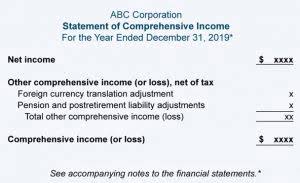
Delve into the world of fixed costs by recognizing common elements. Lease payments, insurance premiums, and salaries are among the fixed expenses that every business encounters. Learn how to identify and categorize these costs for a clearer financial picture. Analyzing and evaluating fixed and variable expenses helps businesses ensure their companies’ financial well-being and profitability. Learn how to apply fixed and variable business costs in this section. Committed fixed costs or capacity costs are multiyear financial obligations companies bear to maintain their production capacity.
Total Fixed Cost Formula: How to Calculate Your Overhead
Additionally, increasing production volumes can help distribute fixed costs across more units. However, this approach must be balanced with market demand and operational capacity to avoid overproduction. When working with Average Fixed Cost, some common errors can lead to misinterpretation. One frequent mistake is confusing fixed costs with variable costs. This calculation shows that each unit produced carries $5 of fixed cost, regardless of variable costs. Variable costs also vary by industry, so it’s important for anyone analyzing companies to make comparisons between those that are in the same industry.
Calculate the average fixed cost

Now, let’s explore how these fixed expenses may fall Accounting for Marketing Agencies into different categories depending on the nature of the cost. Learn why tracking fixed expenses is essential for optimizing different business finance elements in this section. Begin by opening your income statement (also known as a profit and loss statement) for a specific period, such as a month, quarter, or year. It is a recurring cost that is typically the same amount every period. Buildings and machinery depreciate in value, but land does not depreciate.
How do you calculate fixed cost in managerial accounting?
A manufacturer of treadmills produces at a variable cost per unit of $500 with fixed costs https://gazettege.com/periodic-expenses-examples-to-enhance-your/ of $10,000 per quarter. In Q1 they produced 50 treadmills, and in Q2 they produced 65. Average fixed cost, also known as the per unit fixed cost, is determined by dividing total fixed production cost by the number of total units produced within a certain timeframe. Fixed Costs are often looked at within certain time frames such as, monthly, quarterly or annually. This enables businesses to keep tabs on their spending levels and also factors in the cost and its effect on the financial performance of the business over the period.
These costs provide the foundation for your business operations and are often predictable from month to month. Learn how to calculate your overhead and gain financial clarity. Operating leverage refers to the percentage of a company’s total cost structure that consists of fixed rather than variable costs. Whether the demand for a particular company’s products/services (and production volume) is above or below management expectations, these types of costs remain the same.

Impact of Fixed Cost on Financial Metrics

It includes costs like interest, utilities, rent, wages, costs of goods sold (COGS), and more. Yes, fixed costs might change depending on the requirements of your business, inflation rate, and other factors. These are the expenses you can not cut down on and are considered fixed costs.
How do fixed costs work?
Any fixed costs on the income statement are accounted for on the balance sheet and cash flow statement. Fixed costs on the balance sheet may be either short- or long-term liabilities. Any cash used to pay fixed cost expenses is shown on the cash flow statement. For example, a lightbulb factory owner who wants to lower their variable costs may need to look for a cheaper glass source.
How does AFC differ from Average Variable Cost?
- Where TFC is your total fixed costs and Q is your production quantity.
- This means a fixed cost should be calculated over a certain amount of time, usually a short period of a month, four months, six months, or one year.
- Fluctuations in sales and production levels can affect variable costs if factors such as sales commissions are included in per-unit production costs.
- For example, a lightbulb factory owner who wants to lower their variable costs may need to look for a cheaper glass source.
- A fixed cost has an aspect whereby it does not change over time, which is a key principle of any expense of this kind.
- High fixed costs result in a higher break-even point.Variable costs are flexible and scale with production, making them easier to adjust during changing business conditions.
How often should businesses reassess their total fixed costs? Regular reassessment is advisable, especially during periods of growth or economic fluctuations. Dive into real-world scenarios where the total fixed cost formula proves invaluable. Gain insights into different industries, discovering how businesses across the spectrum utilize this formula for financial stability. Understanding how to find fixed cost formula how to calculate total fixed cost is fundamental for businesses aiming for financial stability and strategic decision-making.
- Fixed costs are expenses that do not change with the level of output or sales, such as rent, salaries, and insurance.
- This measure helps businesses analyze how their fixed costs are distributed across units of production.
- With this average fixed cost calculator, you can easily calculate the fixed cost per item produced or sold by a company.
- If an expense fluctuates with these variables, it is called a “variable cost”.
- It is simple to distinguish between the two since fixed costs are recurring, whereas variable costs fluctuate depending on manufacturing output and the general activity level.
- Suzi would still be obligated to pay $1,700 fixed charges each month even if she closed the company.
Fixed Costs Curve

Suzi demands to learn your thoughts on whether she ought to shut down the company. In addition, she has already agreed to cover the cost of a year’s worth of rent, energy, and employee wages. Numerous expenses are covered under maintenance, such as those cleaning supplies, mechanical repairs, or yearly tune-ups for automobiles.
